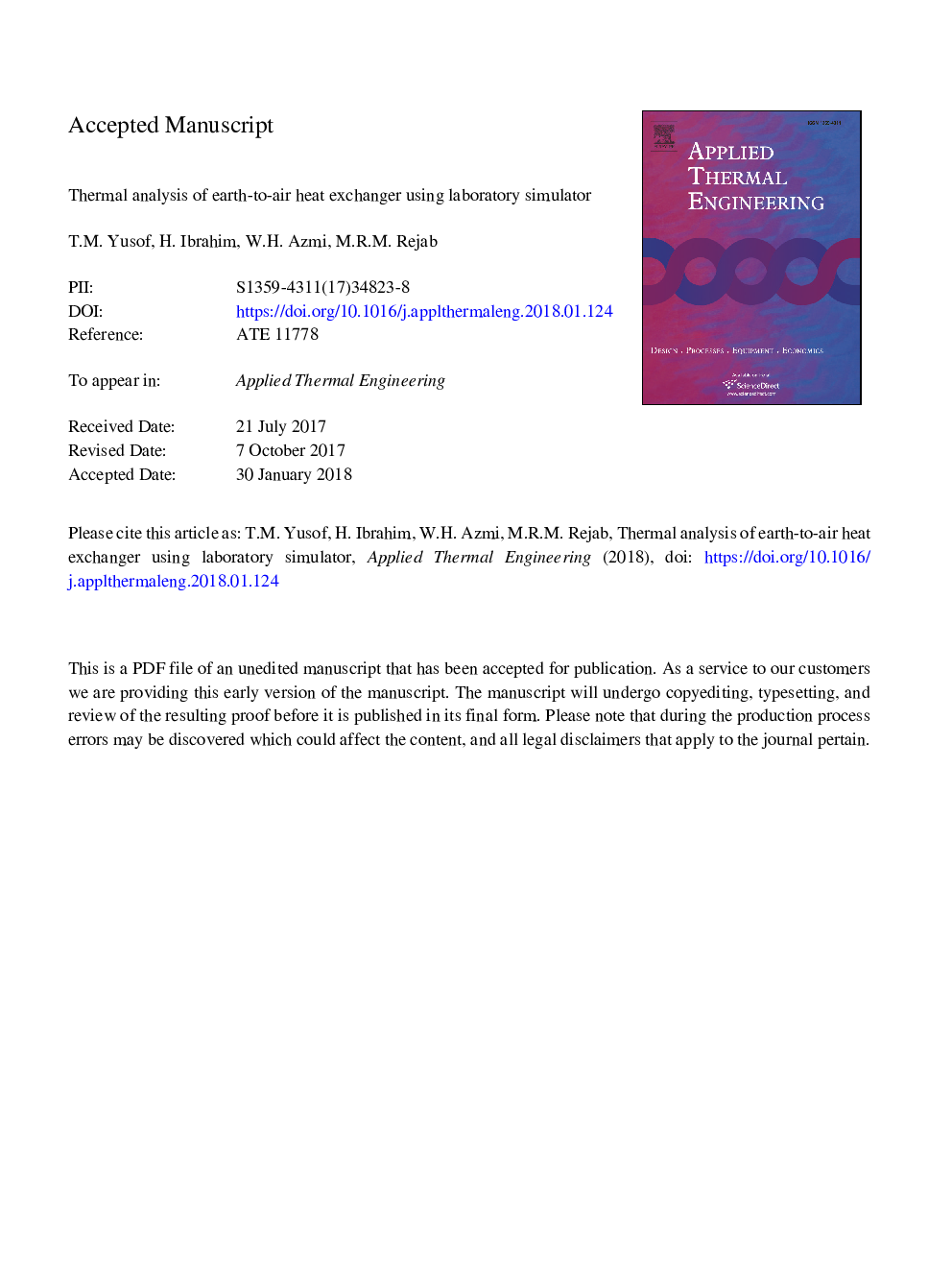| Article ID | Journal | Published Year | Pages | File Type |
|---|---|---|---|---|
| 7045781 | Applied Thermal Engineering | 2018 | 37 Pages |
Abstract
Shallow depth of ground has shown that it is able to produce potential cooling and heating throughout the year. The cooling and heating can be extracted by means of an earth-air heat exchanger (EAHE) technique, numerically and experimentally. The authors have identified that the field experiment has limitations in rapid change of input parameter, repeatability and unnecessary. Thus, this paper presents the performance of EAHE based on experimental studies using a laboratory simulator. Different input parameters have been investigated such as air inlet temperature varies from 31 to 35â¯Â°C, ground temperature (Tg) varies from 23 to 25â¯Â°C and air flow rate at 0.03-0.07â¯kg/s. The actual soil surrounding was created and 8.7â¯m PVC pipe was used in the simulator. Results show that the flow rate of 0.03â¯kg/s and Tg of 23â¯Â°C gives the highest temperature reduction with 9.62â¯Â°C or 27.5% relative to the inlet temperature. The highest heat transfer rate at 558.3â¯W was obtained at a flow rate of 0.07â¯kg/s and Tg of 23â¯Â°C. The experimental results also have been validated with a field test from other researchers and were found to be in close agreement.
Related Topics
Physical Sciences and Engineering
Chemical Engineering
Fluid Flow and Transfer Processes
Authors
T.M. Yusof, H. Ibrahim, W.H. Azmi, M.R.M. Rejab,
